According to the American Bird Conservancy, only 19 species of owls are native to America, even though there are over 250 recognized species worldwide. Among these, even fewer have been spotted in the state of New Jersey. Whether you’re an avid bird watcher or just casually interested in owls, you might be wondering which owls can be spotted in the Garden State. Today, we discuss nine owls that either live in New Jersey or pass through the state during their migration. We also share some tips for finding them.
1. Barn Owl

Barn owls are adept hunters.
©Henk Bogaard/Shutterstock.com
The barn owl is a common visitor in the state of New Jersey, but their numbers have been declining in recent years due to increasing urbanization. Because of this, your best chances of catching a glimpse of one are during their months of peak activity. According to eBird, “Late summer through November is the best time to look for Barns. With fledging, juvenile dispersal, and migration, there are simply more owls to see.”
2. Short-Eared Owl
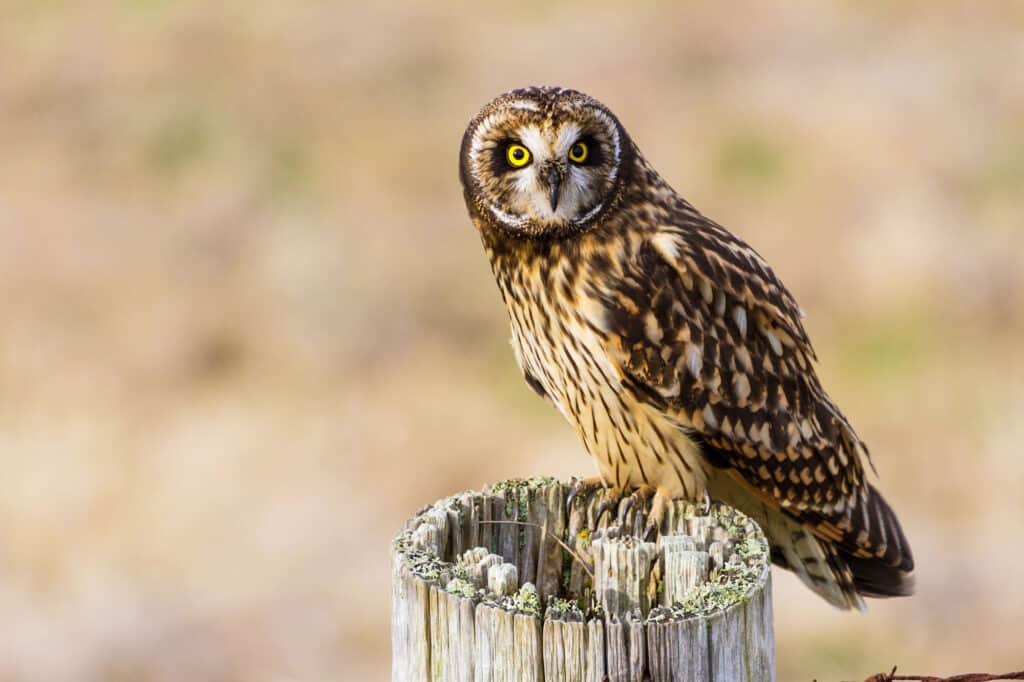
The diet of the short-eared owl consists of rodents, birds, and even small rabbits.
©iStock.com/Devonyu
Within New Jersey, the habitat of the short-eared owl varies between fields, marshes, and grasslands. Like many owls, they are primarily nocturnal, which makes spotting one a bit of a challenge. In addition to this, the short-eared owl has experienced a sharp decline in its population from the mid-1990s to the present day. Spotting one is exceedingly rare, and individuals who are able to catch a glimpse should consider themselves very lucky.
3. Snowy Owl
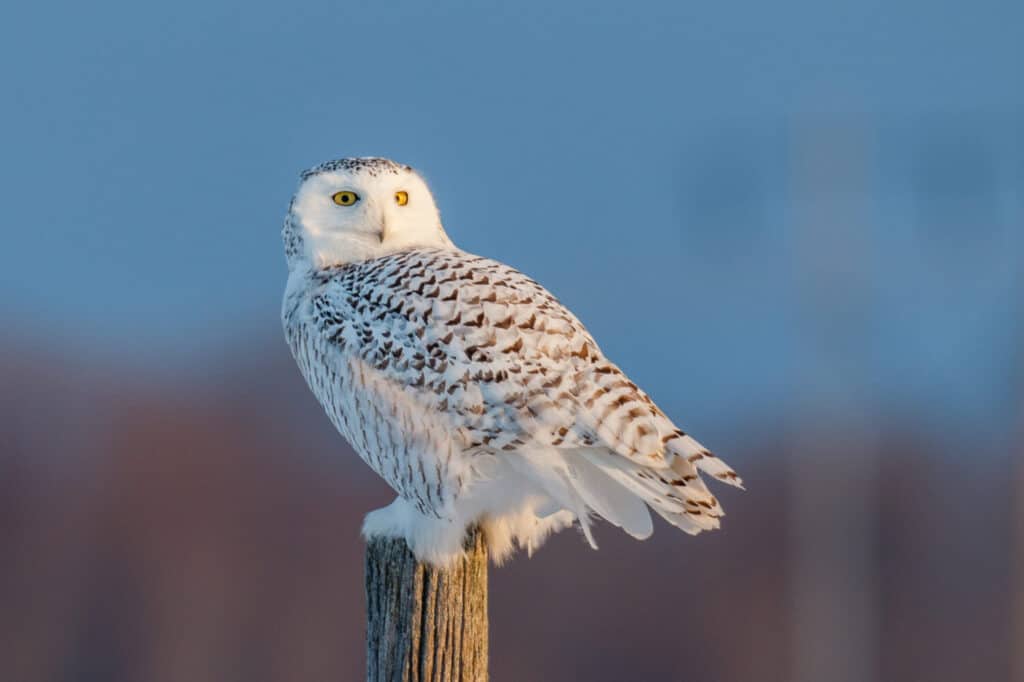
Unlike other owl species, the snowy owl only visits New Jersey out of necessity.
©Guoqiang Xue/Shutterstock.com
Although snowy owls aren’t present in the state of New Jersey all year round, they do pass through occasionally during their migration. During the winter, food sources become scarcer in their natural habitat up north. Because of this, many venture south in order to meet their dietary needs. These owls prefer to spend their time in coastal areas, so try visiting beaches for the best chance at spotting one.
4. Barred Owl
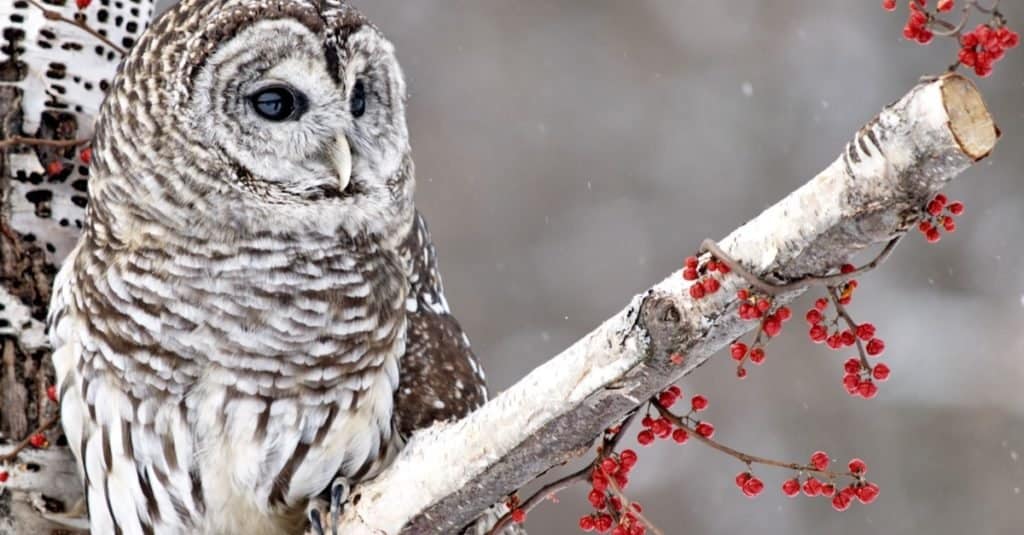
Barred owls are crepuscular predators.
©cindylindowphotography/Shutterstock.com
The barred owl is considered threatened in the state of New Jersey, so seeing one in person is less likely compared to other species on this list. Despite this, barred owls are not strictly nocturnal, and many choose to hunt during different hours of the day. They typically take up residence in dense, forested areas near bodies of water such as swamps or lakes. Try searching these areas during dawn or dusk for the best chance of spotting one.
5. Long-Eared Owl

On average, female long-eared owls will lay about five eggs.
©Romuald Cisakowski/Shutterstock.com
Although the long-eared owl is one of the most common owl species across the globe, spotting one in New Jersey may be more challenging. Long-eared owls are elusive nocturnal hunters with small bodies. They’re shy by nature and avoid contact with humans whenever possible. In addition, because this owl looks similar in appearance to the much more common great horned owl, misidentification is common. If you’re interested in seeing one, try to do so during the cold winter months. Food becomes increasingly more difficult to find, and because of this, many long-eared owls are forced to begin hunting during daytime hours.
6. Northern Saw-Whet Owl
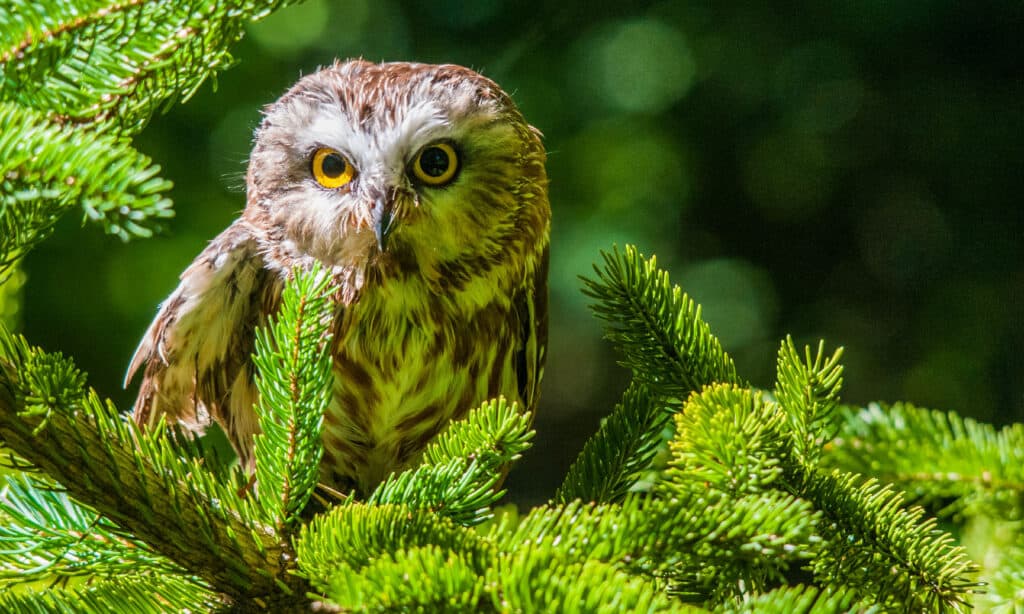
Although saw-whet owls are very tiny, elf owls are even smaller.
©iStock.com/bookguy
This adorable owl is one of the tiniest species in New Jersey. Although they might be quite small, they’re one of the most abundant, making sightings slightly more common. As with many owl species, their peak activity coincides with wintertime. Their diet consists of small birds, rodents, and insects. When temperatures drop, these food sources become harder to find, and northern saw-whet owls begin hunting more frequently to compensate.
7. Eastern Screech Owl
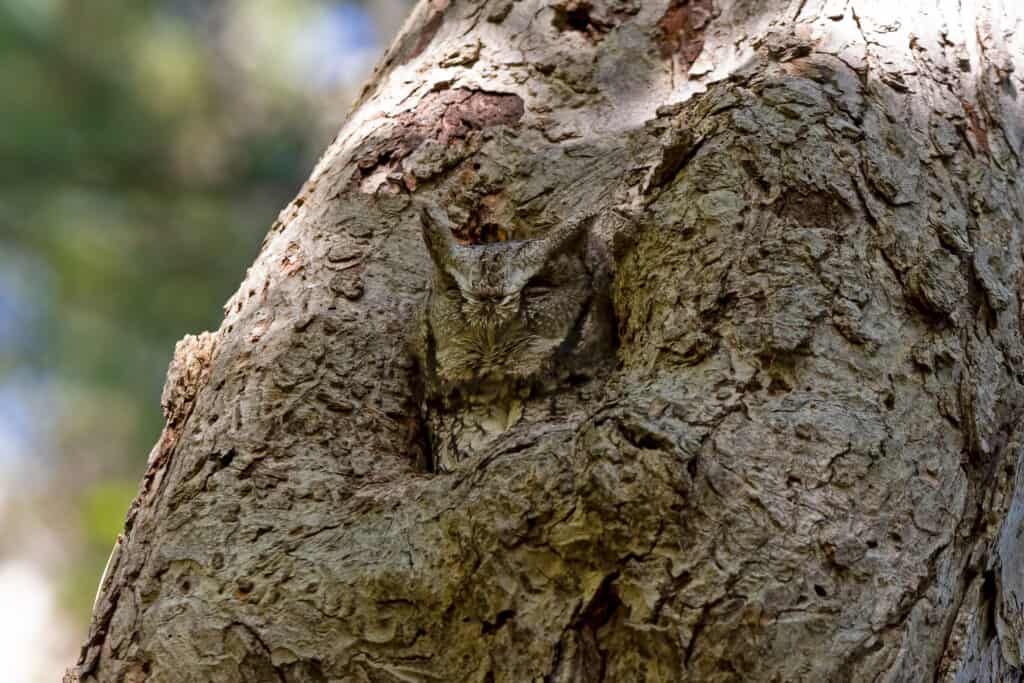
Eastern screech owls are masters of disguise. Their feathers allow them to easily camouflage against bark.
©Karen Hogan/Shutterstock.com
Among all the owls native to the state of New Jersey, the eastern screech owl is the most abundant of all. It lives in a variety of habitats, and sightings have occurred in forests, farms, parks, and even residential areas. Although this species is primarily nocturnal, their call is distinctive. Many people report hearing this owl long before they see it.
8. Great Horned Owl
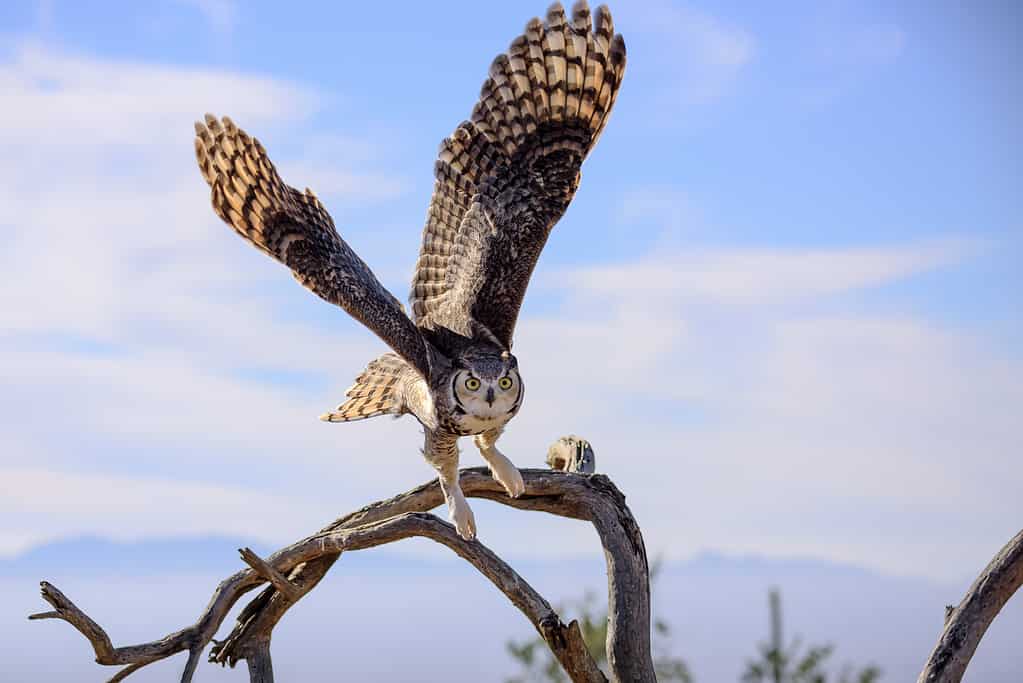
The great horned owl is one of the most common owls in North America.
©iStock.com/kojihirano
When asked to visualize an owl, many people think of the iconic great-horned owl. This species is abundant throughout the state, large in size, and has a distinctive appearance. The large tufts of feathers on their head allow amateur bird watchers to identify this species even from a great distance. This species is often the first owl identified by those just getting into the hobby.
9. Boreal Owl
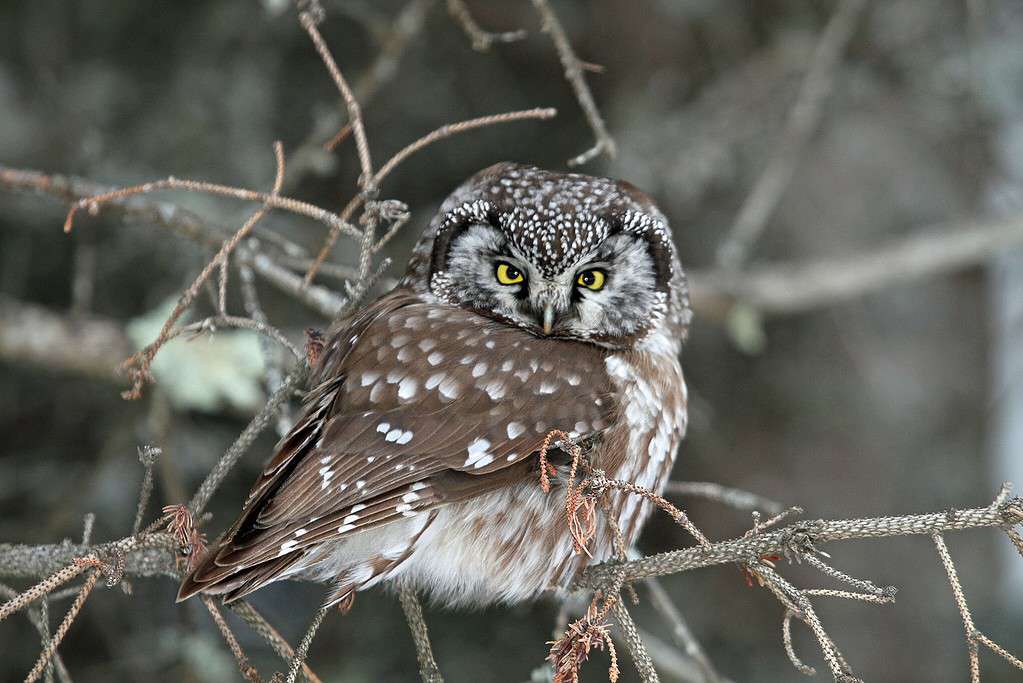
On average, boreal owls live to be between seven and eight years old.
©Greg Schechter / CC BY 2.0 – License
Although it’s not unheard of, seeing a Boreal owl in New Jersey is quite rare. These birds are more commonly found farther north in America and Canada, but every so often, a spotting is reported in New Jersey. In addition to being an uncommon visitor, these owls are nocturnal hunters, meaning their hours of peak activity occur while most of us are asleep. Consider yourself very lucky if you have the chance to spot one!
| Owl Species | Difficulty of Spotting |
|---|---|
| Eastern screech owl, great horned owl | Relatively easy |
| Barn owl, snowy owl, northern saw-whet owl | Moderately difficult |
| Boreal owl, long-eared owl, short-eared owl, barred owl | Challenging |
The photo featured at the top of this post is © Annette Shaff/Shutterstock.com
Thank you for reading! Have some feedback for us? Contact the AZ Animals editorial team.






